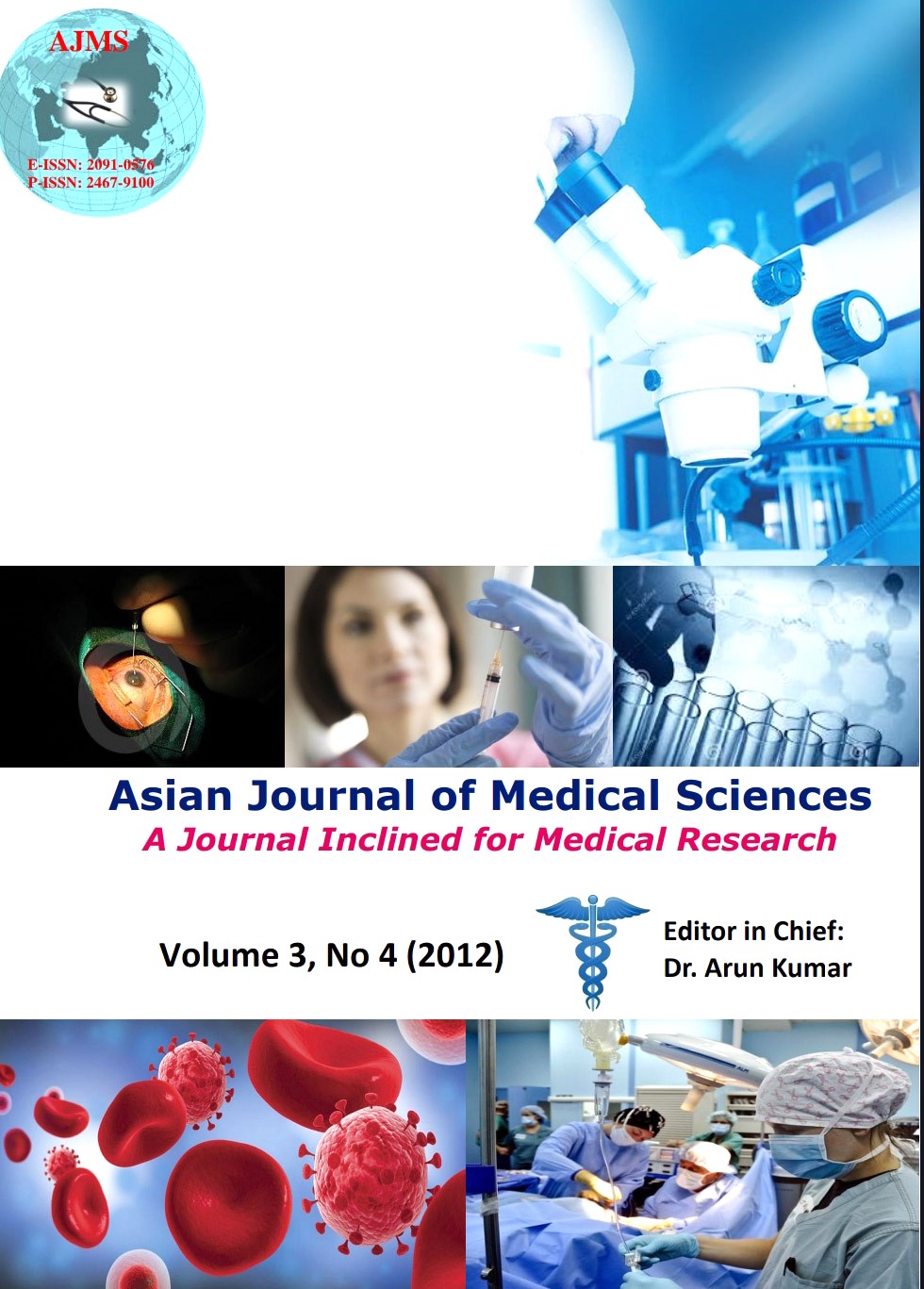Prevalence of Thyroid Disorders in Patients Visiting a Tertiary Care Center in New Delhi: A Three-Year Study
Keywords:
euthyroid, hypothyroidism, hyperthyroidismAbstract
Background: Thyroid disorders constitute the most prevalent endocrine disorder in our country. Thyroid disorders are classified broadly as hyperthyroidism and hypothyroidism depending on the functional capacity of the thyroid gland. These two entities are further segregated as sub clinical and overt dysfunction. The present study attempts to evaluate the prevalence of thyroid disorders in north Indian population which is more prone to hypothyroidism due to iodine deficiency observed in the Himalayan belt.
Materials and Methods: A total of 7474 patients presenting to the department of Biochemistry, G B Pant hospital, Delhi, were enrolled in the study. The patients were examined and asked to report after overnight fast for sample collection on a prescribed date. Thyroid hormone estimation was done with commercially available ELISA kits supplied by Cal biotech, USA. Statistical Analysis was done using Microsoft Office “Excel” with Windows 2007 Operating System and multiple comparisons were made using SPSS 12.0 statistical software package.
Results: The majority of the patients (approximately 85%) were Euthyroid. Only 1.22% of the total number of referred patients turned out to be hyperthyroid. Hypothyroidism was more prevalent with the number of patients diagnosed with both sub clinical and overt hypothyroidism being 987 (13.2%).
Conclusions: We have strived to provide a baseline orientation regarding the prevalence of thyroid disorders in the representative north Indian population in the post iodine fortification era.
DOI: http://dx.doi.org/10.3126/ajms.v3i4.7705
Asian Journal of Medical Science Vol.3(4) 2012 pp.15-23
Downloads
Downloads
Published
How to Cite
Issue
Section
License
Authors who publish with this journal agree to the following terms:
- The journal holds copyright and publishes the work under a Creative Commons CC-BY-NC license that permits use, distribution and reprduction in any medium, provided the original work is properly cited and is not used for commercial purposes. The journal should be recognised as the original publisher of this work.
- Authors are able to enter into separate, additional contractual arrangements for the non-exclusive distribution of the journal's published version of the work (e.g., post it to an institutional repository or publish it in a book), with an acknowledgement of its initial publication in this journal.
- Authors are permitted and encouraged to post their work online (e.g., in institutional repositories or on their website) prior to and during the submission process, as it can lead to productive exchanges, as well as earlier and greater citation of published work (See The Effect of Open Access).




